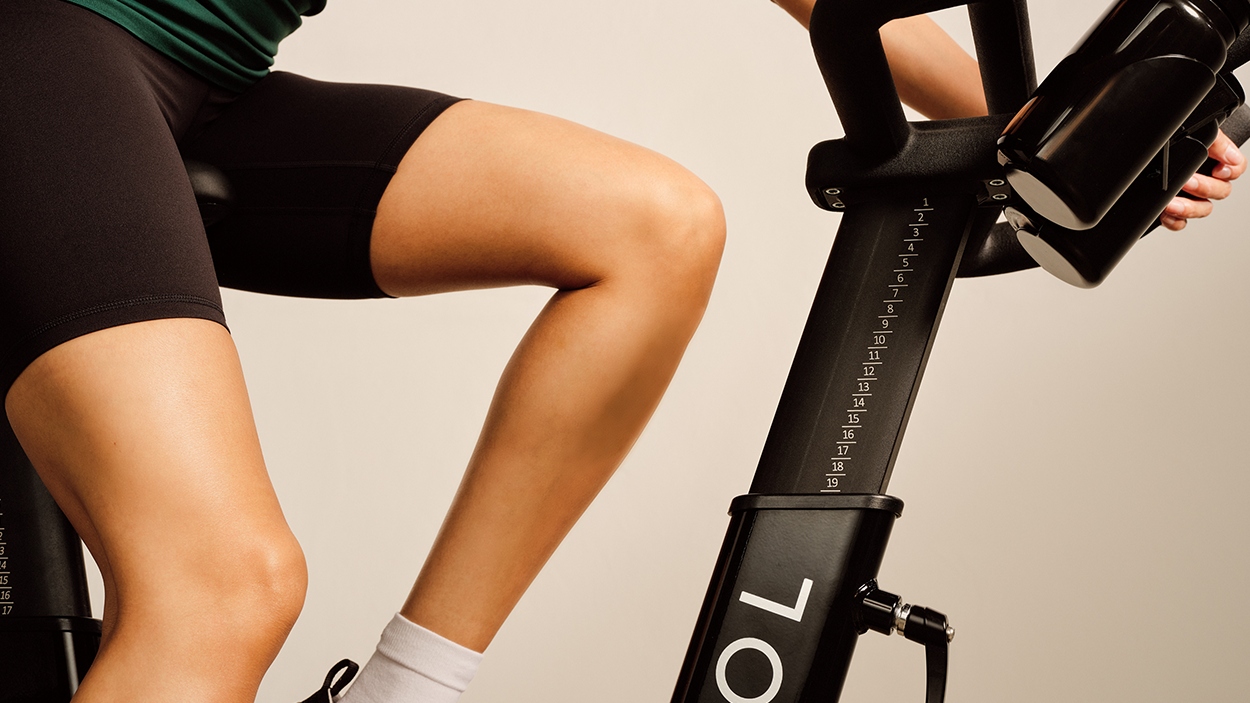The health benefits of intermittent fasting are getting a lot of attention in studies and media. Not only does it facilitate weight loss, but it also improves blood sugar regulation, increases longevity, and helps to prevent several serious diseases—including type 2 diabetes and heart disease.
Exercise is recommended to preserve muscle mass during fasting. Moreover, it may amplify the positive effects of intermittent fasting. At the same time, you need to cautiously build your workout plan to avoid potential risks, which we will discuss in this article.
What is intermittent fasting?
During intermittent fasting, you only have meals within a specific eating window which may last from a few hours to a few days. The most popular intermittent fasting format is 16:8 where you eat during any 8 hours of the day and fast for the other 16. For example, your 8-hour eating window can begin at 9 a.m. and finish at 5 p.m. Intermittent fasting restricts only the eating time but doesn’t limit the number of meals, type of food, or calorie intake.
This diet method is convenient for many reasons. It naturally decreases overall calorie intake and eliminates the overconsumption of food, especially in the late hours. Time constraint is easier because you don’t have to count the number of calories or analyze everything that you eat every day. If your eating window finishes early, you have better sleep during the night with an empty stomach.
After hours without food, the body runs out of its sugar stores and starts burning fat. By prolonging this period, intermittent fasting is an effective way to lose weight. A systematic review of 27 trials with different intermittent fasting protocols showed that decrease in body weight ranged from 0.8% to 13.0% in all of them. Patients lost weight regardless of changes in overall caloric intake.
Some research suggests that weight loss isn’t the only benefit of intermittent fasting. It can reduce the risk of diabetes and heart disease.
A 3-month intermittent fasting diet intervention among 36 people improved their insulin sensitivity and lowered glucose levels. As a result, almost 90% of participants reduced their diabetes medication intake after intermittent fasting. 55% of participants reported diabetes remission and discontinued their diabetes medication and maintained it for at least one year.
Intermittent fasting switches metabolism from fat storage to fat oxidation for energy which may reduce inflammation and slow down some aging processes such as decline in cognitive function. It is also beneficial to improve cardiovascular health, including reduced blood pressure and resting heart rate.
Most of the studies focus on the short-term fasting period of a few months. Longer periods of fasting could slow down your metabolism and lead to a weight loss plateau in the same way as caloric restriction.
Combining intermittent fasting with training
Intermittent fasting and exercise complement each other and create synergic effects. Both practices increase fat oxidation, facilitate weight loss, improve insulin sensitivity, elevate growth hormone levels which promotes muscle growth, and contribute to cellular health and longevity. On a mental level, both exercise and intermittent fasting trigger the release of endorphins which reduce stress, anxiety, and depression.
Regular exercise during fasting is necessary to prevent your body from burning muscle tissue instead of fat. While it’s hard to build muscle mass during intermittent fasting, exercise will protect you from losing it. This was confirmed during a study of 34 participants who were assigned to either a regular diet or a 16:8 daily fasting and followed a 2-month standard resistance training program. At the end of the study, the members of the 2nd group showed a reduction in fat mass while retaining their lean mass and strength.
Combining intermittent fasting with exercise is a powerful way to accelerate your weight loss. Intermittent fasting depletes glycogen stores in muscle so you’ll burn more fat during exercise. In a 2016 study, 2 groups of participants did a morning 60-minute running session either after overnight fasting or after having breakfast. The results suggest that fasting before exercise helped participants to reduce overall energy intake and increase fat oxidation during exercise. It can be used as an effective tool for body composition management.
One randomized controlled trial of intermittent fasting (20 hours of fasting 4 days/week) combined with resistance training during one month has even shown that participants improved their upper and lower body endurance.

Regular exercise during fasting is necessary to prevent your body from burning muscle tissue instead of fat.
Choosing the time and type of training
When you exercise during time-restricted feeding, you may not have enough energy to perform the workout well. That’s why it’s important to choose the right timing for your sessions. You can choose between the 3 options: exercising before, after, and during the eating window. Each of them is suitable for different types of training.
Exercising before the eating window
Low-intensity aerobic exercise which runs on fats can be done in the morning, before the eating window. Research shows that a morning running or cycling session will increase your fat oxidation and help you burn more calories. Morning training suppresses appetite so it may also decrease your daily calorie intake. Zone 2 training is the sweet spot where your body is burning the maximum amount of fat it can use for energy.
Exercising after the eating window
Lifting weights, doing HIIT training or sprints depend on carbohydrates for fuel. If you want to perform this training well, it’s better to schedule them close enough to your last meal of the day and ensure you have enough carbs. Otherwise, you may feel weak or lightheaded during the training.
Exercising in the middle of the eating window
You might want to get some protein after an intense workout to aid muscle regeneration. This is particularly important for strength training and long endurance training—it is recommended to follow up these types of workouts with carbohydrates and about 20 grams of protein within 30 minutes. In this case, you can schedule strength training in the middle of the eating window to eat before and after.
Tips to exercise safely while fasting
Drink more water
It is generally recommended to drink more water during the fasting period. Make sure you are not dehydrated after fasted workouts.
Start with low-intensity workouts
Listen to your body and slowly increase the intensity of your workouts to avoid any discomfort. Plan HIIT and weight lifting sessions after a few weeks of regular low-intensity fasted cardio. It is also safer to start exercising after your eating window first.
Get nutrient-rich meals
Ensure that the meals you have during your eating windows have at least 50% of carbs, 20-25% of protein, and 20-30% of fat. Aim to get more protein to maintain muscle during fasting.
Get enough recovery
Intermittent fasting may slow down the recovery process after the training so you may need to add extra recovery days to your schedule.
Consider your fasting scheme
The most common 16:8 intermittent fasting scheme works with any type of workout. But if you have a longer fasting period such as an alternate day fasting you need to restrict your physical activity with low-intensity yoga, stretching, or walking.
Working out while intermittent fasting may accelerate your fat loss and improve your blood sugar regulation and insulin sensitivity. It will also protect you from losing lean muscle mass and improve your body composition. At the same time, alongside with benefits, you may experience a lack of energy, motivation, and exercise enjoyment. It’s important not to push yourself and find the workout plan that works for you without causing any physical discomfort. Remember that it’s not recommended to do intermittent fasting for an extended period.
FAQs for working out while fasting
Can I work out while intermittent fasting?
Yes, it is generally safe to exercise while fasting using the most popular fasting methods such as 12:12, 14:10, and 16:8. You may need to lower the intensity of your workouts and include extra recovery days to avoid any discomfort. Gradually build up on the intensity of your workout plan and listen to your body.
Does exercising while fasting burn fat?
According to multiple studies, exercising while fasting increases fat oxidation which leads to increased fat loss. Exercising also prevents you from losing muscle mass which improves your body composition.
Can I build muscle while intermittent fasting?
To build muscle, you need to increase your protein intake and do 2-3 strength training sessions per week. This may be too stressful for your body to achieve while fasting. A more realistic goal would be to preserve your muscle mass with exercise.
How much weight can I lose with intermittent fasting and exercise in a month?
A systematic review of 40 studies shows that intermittent fasting on average burns 7-11 pounds over 10 weeks. If you add 3x training moderate-intensity sessions per week, this may help you burn an additional pound per month. Remember that it’s not recommended to lose a lot of weight over a short period and it may be complicated to maintain it in the long term.






